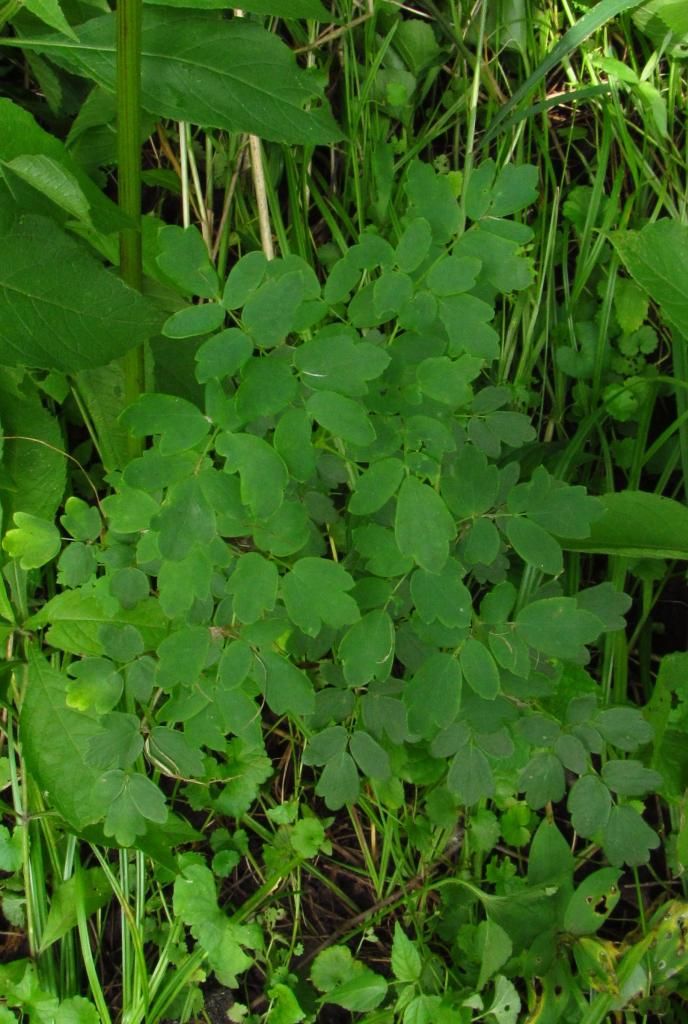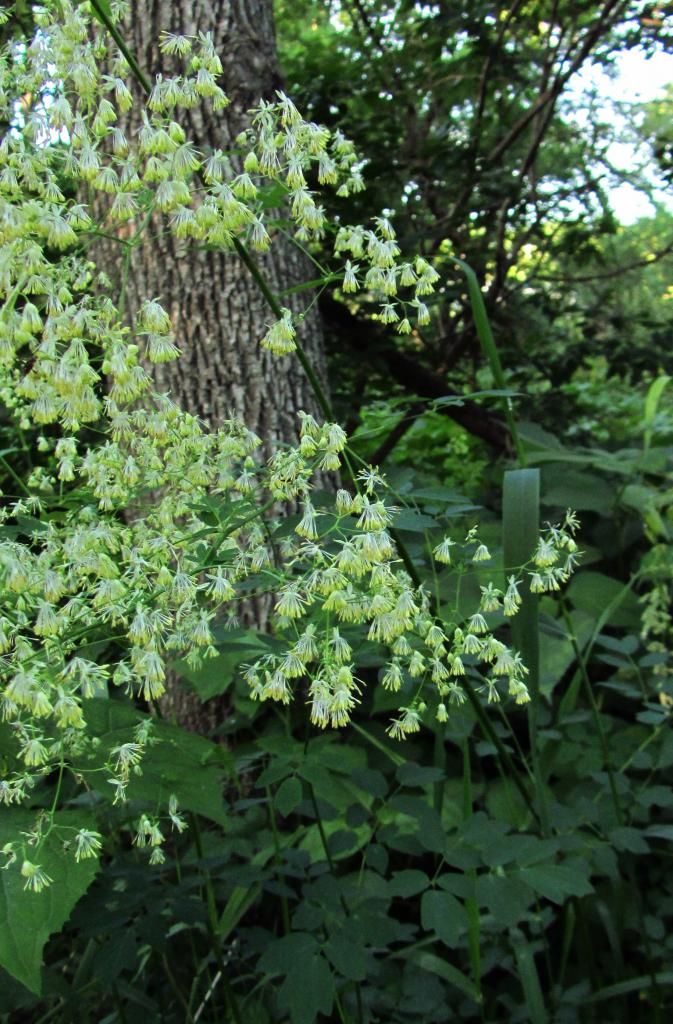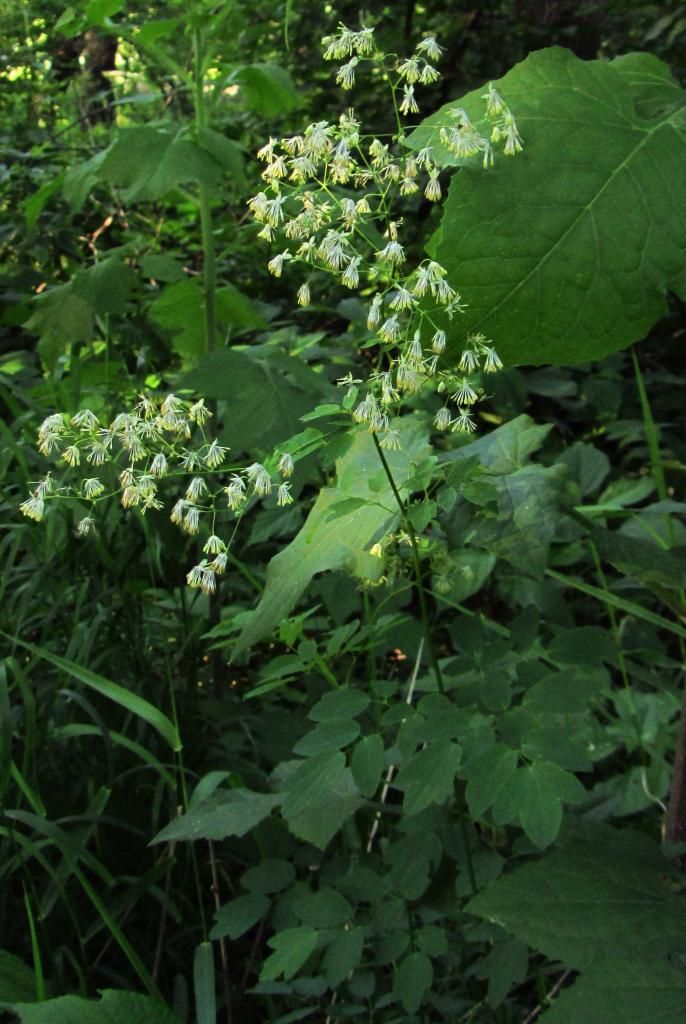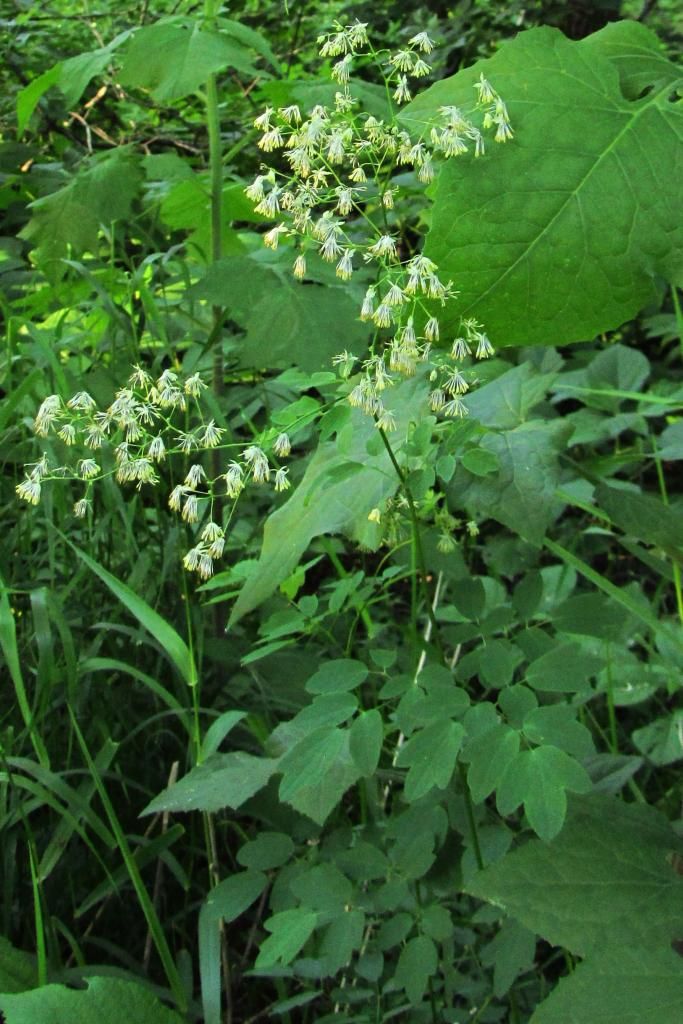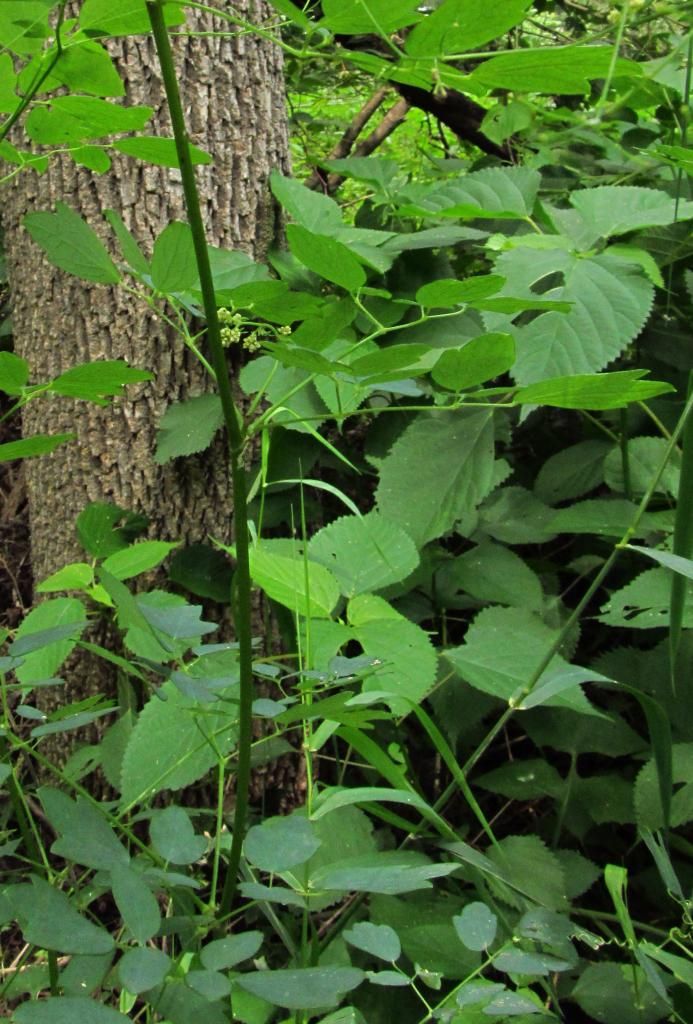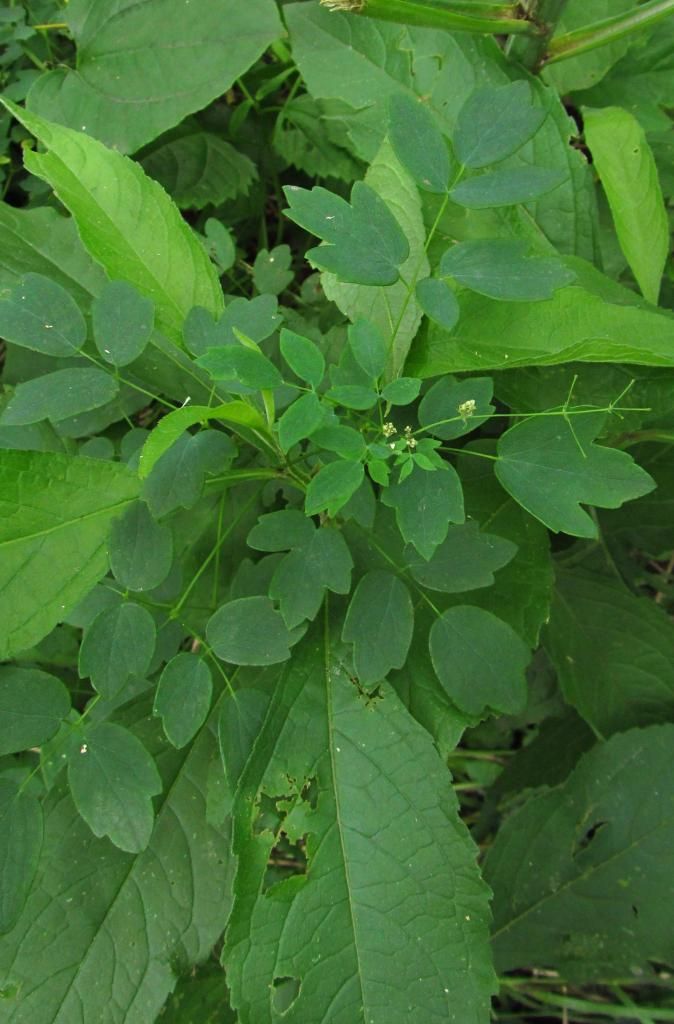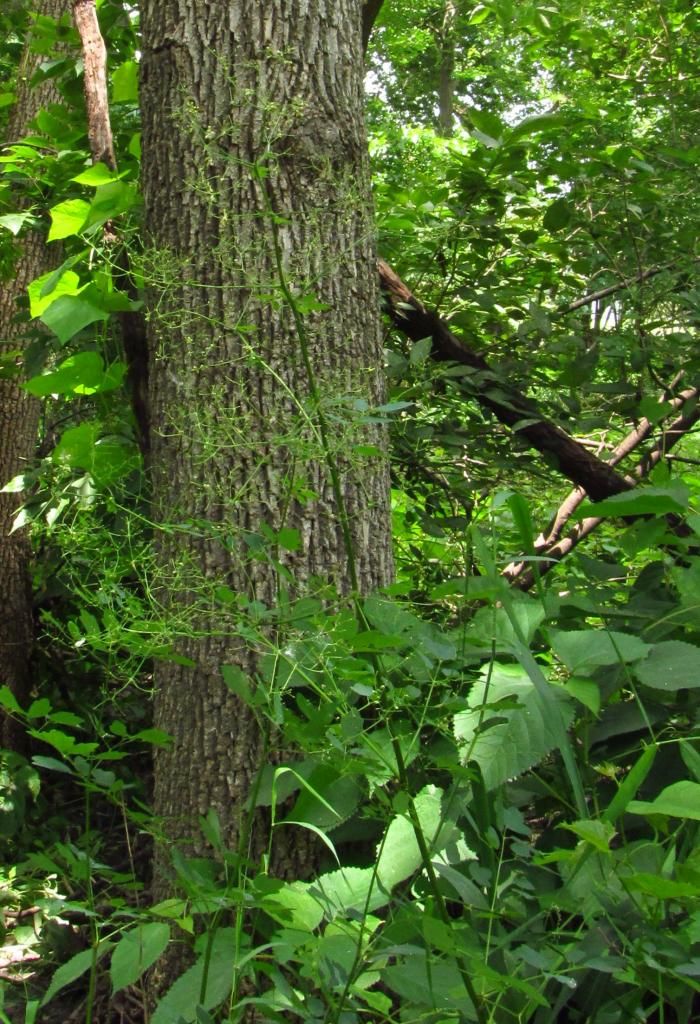Most of Iowa will get a break from the rain over the next few days, and temperatures will be milk, so I hope many of you will be able to spend time outdoors over the holiday weekend. A huge variety of summer wildflowers are blooming in Iowa woodlands and prairies. The most conspicuous include masses of elderberry bushes flowering along central Iowa bike trails and stream banks, and butterfly milkweed, forming clusters of bright orange in prairies and along some roads and highways.
Today’s featured wildflower can grow in many different habitats, including wet prairies, meadows, swamps, or woodlands, especially lowland woods near streams. I found this patch of purple meadow rue (Thalictrum dasycarpum) a few weeks ago along the Clive Greenbelt trail, between 86th St and 100th St.
This is also a mid-week open thread: all topics welcome.
At first I wasn’t sure which of the meadow rues I had seen. The Lady Bird Johnson Wildflower Center’s website describes purple meadow rue as follows:
Purple meadow-rue or tall meadow-rue is a stout, upright perennial, 2-6 ft. high, with purplish stems branching in the upper portion. The flowers, which occur in loose, delicate, terminal clusters, are creamy-green with petal-like sepals falling as they open. Numerous, colored, thread-like stamens remain, becoming drooping and tangled. The leaves are divided into numerous, three-lobed leaflets.
These plants didn’t have purple stems. Then again, a couple of other sources I consulted said Thalictrum dasycarpum “frequently” or “often” has purplish stems. Maybe I found an unusual group. Eileen Miller helped me with the ID:
I thought I’d better do some homework on meadow rue species in Iowa. First I learned that we have 3 species: purple meadow rue (Thalictrum dasycarpum), early meadow rue (Thalictrum dioicum), waxy meadow rue (Thalictrum revolution). All are native. Early meadow rue is a small plant, reaching from 6 inches up to about 2 feet in height. It grows in moist woods in rocky places. It blooms in early spring. There is quite a bit of it at Dolliver State Park. Purple meadow rue may grow from 3 to 5 feet tall. It’s found in moist prairie remnants, open woods. Male and female flowers are usually found on separate plants, but occasionally on the same plant. I’ve usually seen them on separate plants. The undersides of the leaves of purple meadow rue are smooth to finely hairy. They are odorless if crushed. Waxy meadow rue is similar to purple meadow rue, but It’s leaves are quite hairy gland-tipped hairs on the undersides. These leaves have an unpleasant odor when crushed. Both purple meadow rue and waxy meadow rue bloom in late spring to early summer. At Hobbs Conservation Area in Carroll county I’ve identified purple meadow rue. It is more common that waxy meadow rue.
The plants along the Clive Greenbelt were much too tall and blooming too late to be early meadow rue. The other species bloom in June or July. When I went back to check on the leaves, I saw that they were not hairy on the underside, and I couldn’t smell anything when I crushed a couple of them. I’m fairly confident, then, that this is purple meadow rue despite the green stems. The Illinois wildflowers website features this species with purple stems.
Foliage from meadow rue species is distinctive because of the three-lobed leaflets described above. Here’s a young plant with no flowers:
In Wildflowers of the Tallgrass Prairie, Sylvan Runkel and Dean Roosa write of Thalictrum dasycarpum,
Masses of soft, feathery flowers tower above surrounding growth. The multibranched flower heads are often a foot or more in length. Each flower is borne on its own slender stalk. This flower has no true petals. The 4 or 5 greenish, petal-like sepals are shaped like narrow ovals with slender tips.
A distinctive feature of the male flower, which is more fluffy and delicate than the female flower, is the mass of long, conspicuous, whitish stamens that may have a purplish or brownish tinge. Female flowers are dull and coarse in appearance. Male and female flowers are usually on separate plants, but occasionally both kinds of flowers are found on the same plant.
Here are a few shots of the male flowers.
I looked around for plants with female flowers blooming, but I don’t think I found any, unless these are female flower buds.
Here some purple meadow rue is growing intertwined with wingstem, which will bloom later this summer. (You can’t see the “wings” on the stem well in this shot.)
Purple meadow rue is reportedly not hard to grow in flower gardens. It’s pollinated by wind, not insects, “as its female flowers are devoid of nectar,” although “honeybees and other bees are sometimes attracted to the abundant pollen of male flowers.”
After purple meadow rue finishes blooming, it’s easy to overlook the remnants of the stalks that held the drooping male flowers. When I went back for more pictures a couple of weeks later, I had trouble getting clear photographs of these stalks, but some of them stand out against the tree bark in the background.

